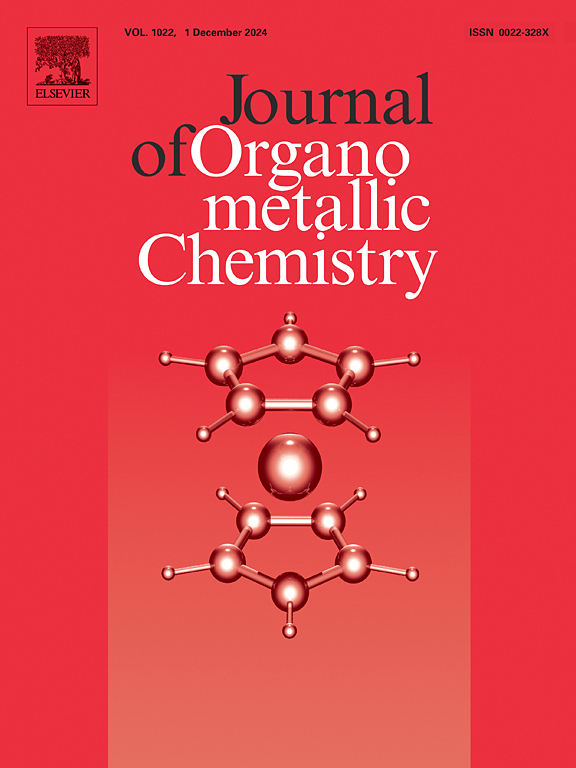Eco-friendly synthesis of gold nanoparticles using Ruta graveolens Leaf extract and their efficient catalytic reduction of 4-Nitroaniline, Methylene Blue and Antibiotic Nitrofurantoin
IF 2.1
3区 化学
Q3 CHEMISTRY, INORGANIC & NUCLEAR
引用次数: 0
Abstract
One of the main objectives of research in nanoscience has been to reduce environmental problems. The goal of the present investigation was to generate biogenic gold nanoparticles (AuNP), which can potentially be used for reducing nitroaromatics and methylene blue dye using sodium borohydride. Ruta graveolens Leaf extract was used to synthesize AuNPs by adding it to gold solutions. After two hours of reaction, a cherry red color appeared in the reaction mixture. The formation of nanoparticle is ascertained by powder X-ray diffraction (PXRD), transmission electron microscopy (TEM), EDAX and UV–Vis spectroscopy were used. In this paper we used green method for the synthesis of nanoparticles, Without the addition of any capping or reducing agents, we were able to successfully produce gold nanoparticles. The formation of oval-shaped nanoparticles, range in size from 27 to 45 nm, can be observed in the HR-TEM data. The synthesized nanoparticle is used for studies on catalytic reduction. As expected, in the presence of sodium borohydride (NaBH4), the reduction of the antibiotic Nitrofurantoin (NF), nitroaromatic 4-nitroaniline, and a dye known methylene blue was completely reduced. The antibacterial drug nitrofurantoin, which is marketed under several trade names, including Macrobid, is used to treat UTIs but is less successful in treating kidney infections. The possible mechanism for the catalytic reduction is also demonstrated. Thus confirmed the potential catalytic ability of these nanoparticles in the reduction of aromatic nitrocompounds. Even after seven cycles, the nanoparticle remains recycled and used for reduction, and it has been found that the catalytic activity is intact. Further, kinetic study shows that the reduction of nitrocompounds follows the first-order kinetics.
This finding confirms the potent catalytic activity of biogenic AuNPs produced by Ruta graveolens extract on the reduction of hazardous methylene blue dye and toxic nitroaromatics.
Moreover, the AuNPs demonstrated remarkable robustness and recyclable nature, making them appropriate for practical applications.

利用芦花叶提取物高效催化还原4-硝基苯胺、亚甲基蓝和抗生素呋喃妥英的环保合成纳米金
纳米科学研究的主要目标之一是减少环境问题。本研究的目的是制备生物源金纳米颗粒(AuNP),该纳米颗粒可用于硼氢化钠还原硝基芳烃和亚甲基蓝染料。以芦花叶提取物为原料,将其加入金溶液中合成AuNPs。反应2小时后,反应混合物呈现樱桃红色。采用粉末x射线衍射(PXRD)、透射电子显微镜(TEM)、电子能谱(EDAX)和紫外可见光谱(UV-Vis)对纳米颗粒的形成进行了表征。在本文中,我们采用绿色方法合成纳米颗粒,在不添加任何封盖剂和还原剂的情况下,我们成功地制备了金纳米颗粒。在HR-TEM数据中可以观察到椭圆形纳米颗粒的形成,尺寸范围在27到45 nm之间。合成的纳米颗粒用于催化还原的研究。正如预期的那样,在硼氢化钠(NaBH4)的存在下,抗生素呋喃妥英(NF)、硝基芳香4-硝基苯胺和一种已知的亚甲基蓝染料的还原完全被还原。抗菌药物呋喃妥因(nitrofurantoin)以包括Macrobid在内的几个商品名上市,用于治疗尿路感染,但在治疗肾脏感染方面不太成功。并对催化还原的可能机理进行了论证。从而证实了这些纳米颗粒在还原芳香族硝基化合物方面的潜在催化能力。即使经过7次循环,纳米颗粒仍然可以回收并用于还原,并且发现其催化活性完好无损。此外,动力学研究表明,硝基化合物的还原遵循一级动力学。这一发现证实了石竹提取物产生的生物源AuNPs对有害亚甲基蓝染料和有毒硝基芳烃的还原具有强大的催化活性。此外,aunp表现出显著的稳健性和可回收性,使其适合实际应用。
本文章由计算机程序翻译,如有差异,请以英文原文为准。
求助全文
约1分钟内获得全文
求助全文
来源期刊

Journal of Organometallic Chemistry
化学-无机化学与核化学
CiteScore
4.40
自引率
8.70%
发文量
221
审稿时长
36 days
期刊介绍:
The Journal of Organometallic Chemistry targets original papers dealing with theoretical aspects, structural chemistry, synthesis, physical and chemical properties (including reaction mechanisms), and practical applications of organometallic compounds.
Organometallic compounds are defined as compounds that contain metal - carbon bonds. The term metal includes all alkali and alkaline earth metals, all transition metals and the lanthanides and actinides in the Periodic Table. Metalloids including the elements in Group 13 and the heavier members of the Groups 14 - 16 are also included. The term chemistry includes syntheses, characterizations and reaction chemistry of all such compounds. Research reports based on use of organometallic complexes in bioorganometallic chemistry, medicine, material sciences, homogeneous catalysis and energy conversion are also welcome.
The scope of the journal has been enlarged to encompass important research on organometallic complexes in bioorganometallic chemistry and material sciences, and of heavier main group elements in organometallic chemistry. The journal also publishes review articles, short communications and notes.
 求助内容:
求助内容: 应助结果提醒方式:
应助结果提醒方式:


